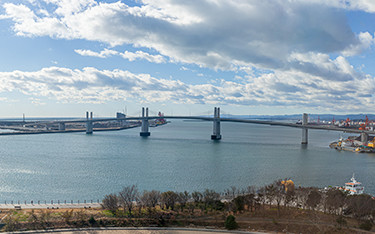Johan Kvalheim is the new director of the Norwegian Seafood Council (NSC) for Japan and South Korea. He has a master’s degree in fisheries science from the Norwegian College of Fishery Science. He previously represented the NSC in its Paris office, responsible for the French and U.K. markets from 2007 to 2013. Then he worked as general manager for MSD Animal Health in Norway for four years. He credits the development of fish vaccines by
… Read MoreFishery cooperative membership has fallen 24.4 percent in the period from the end of the 2010 fiscal year through March 2019 in three northeast Japan prefectures hit hardest by the 2011 earthquake and tsunami – Miyagi, Iwate, and Fukushima – according to a Kyodo News survey.
The membership decline in Miyagi Prefecture was the greatest, with the number of regular members falling by half, the survey said. Nationwide membership
… Read MoreBioelectrical impedance analysis (BIA) is increasingly being applied to fish to measure body composition non-destructively, in order to guage things like fat percentage and fish quality.
Similar to how scales found in health clubs measure the body mass indexes of humans, BIA technology measures fish to determine impedance, which lends itself to the calculation of a fish's body fat percentage.
Devices of this type typically
… Read MoreJapanese Prime Minister Yoshihide Suga announced on Friday, 26 February, that the government would lift the COVID-19-related state of emergency in the six prefectures of Osaka, Hyogo, Kyoto, Aichi, Gifu, and Fukuoka on 1 March.
Suga said the state of emergency will remain for the four prefectures in the Tokyo metropolitan area – Tokyo, Chiba, Kanagawa, and Saitama – until at least 7 March.
The emergency was initially declared in
… Read More“Nesting behavior” has taken hold in Japan due to COVID-19, resulting in people eating out less.
It’s a trend that is only expected to intensify as Tokyo, Kanagawa, Chiba, Saitama, Osaka, Kyoto, Hyogo, and Fukuoka prefectures extend their state of emergencies, which were due to lift on 7 February, for another month. While the declarations are in place, the government is asking restaurants and bars to close by 8 p.m.
Instead of
… Read MoreThree Japanese seafood companies recently released their quarterly results, revealing the various impacts that COVID-19 has had on some of the region’s biggest firms
… Read MoreA strong earthquake on the night of 13 February shook the same area of Japan that suffered a massive quake, tsunami, and subsequent nuclear disaster on 11 March, 2011. While the timing and location were ominous, no tsunami warning was issued this time.
The large earthquake offshore from Fukushima Prefecture occurred at 11:08 p.m. on Saturday. It had a magnitude of 7.1 on the Richter scale and a Japan Meteorological Agency (JMA) seismic intensity
… Read MoreAs the tenth anniversary of the East Japan earthquake, tsunami, and Fukushima Daiichi nuclear disaster approaches, fishery cooperatives in Fukushima Prefecture are making progress toward recovery by reopening damaged port cargo handling and auction buildings and sales outlets – even as new releases of cooling water from the crippled reactor appear imminent.
The 11 March, 2011, disaster resulted in fishing being banned in the
… Read MoreTokyo, Japan-based Marubeni Nisshin Feed Co., Ltd. – a 60-percent-owned subsidiary of Japanese conglomerate Marubeni – announced in December 2020 its establishment of a wholly-owned subsidiary aquafeed company in Tianjin, China. …
Photo courtesy
… Read MoreJapanese corporations – including the huge conglomerates such as Nissui, Maruha Nichiro, and Mitsubishi – have been heavily influenced by the United Nations Sustainable Development Goals (SDGs), which were adopted in 2015 “as a universal call to action to end poverty, protect the planet, and ensure that all people enjoy peace and prosperity by 2030.”
Practically every major company in Japan has amended its corporate
… Read More














